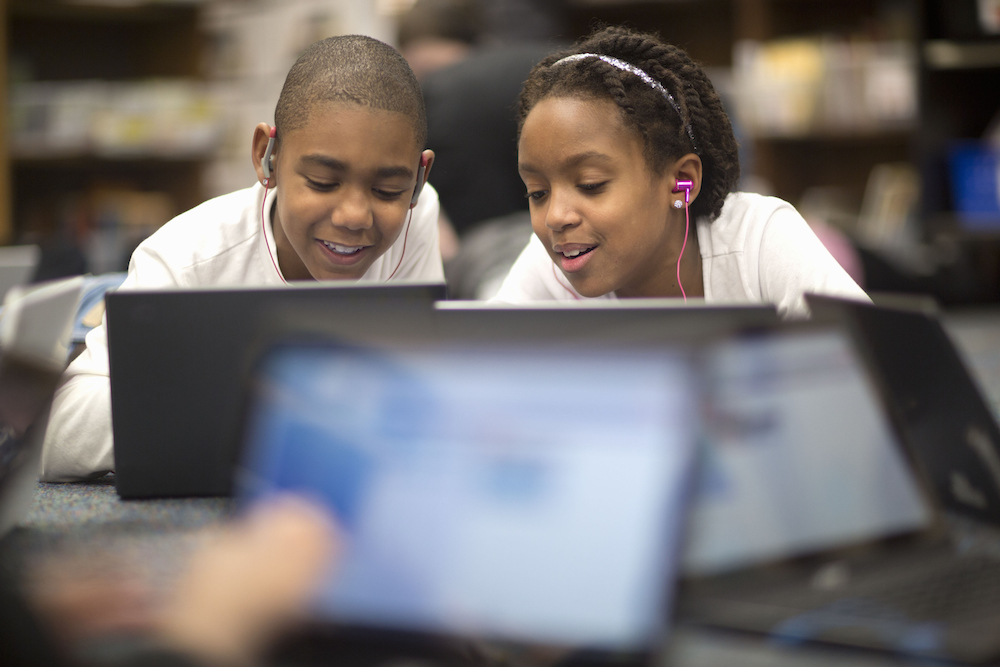Lesson Overview
Students will compare and contrast the ways they respond to a close friend in distress (versus themselves) and consider how they might adjust what they say to themselves when they are struggling.
Students will compare and contrast the ways they respond to a close friend in distress (versus themselves) and consider how they might adjust what they say to themselves when they are struggling.
Reflection before the practice.

Ready?
Begin Lesson
Before beginning this activity, take a few deep breaths. Remind students that they are encouraged but not required to participate. (They are welcome to sit quietly if they choose not to participate.)
We will purposely generate a little tension or stress in our minds and bodies by thinking of a challenging situation, so we can then learn how to use self-compassion.
Play the audio recording for your students or lead them through the practice with the transcript below.
Think of a situation in your life that is difficult or causing you stress. Please choose a situation that is not the worst or most difficult in your life, but something that is causing you some discomfort. When you think of this situation, can you feel the experience in your body, perhaps discomfort such as tightness in the chest or gripping in the stomach? Now, say to yourself: “In this moment, a part of me is struggling.” This is mindfulness. You might choose to say, “Whoa, this feels awful,” or “This sucks,” or maybe, “This is stress.”
Now say to yourself: “This kind of struggle is a part of life.” This is common humanity. Lots of other people struggle in this same way.
You might choose to say, “Other kids feel this way too,” or “I’m not alone with this feeling,” or “This is a part of being a teen and so many other kids struggle just like me.” Or “All teens feel this at some time or another…!”
Now, offer yourself a kind and soothing, supportive touch — maybe a hand on your heart or another gesture that feels right for you. Feel the warmth of your hand coming through to your body. Now, say to yourself: “May I be kind to myself.” Remember that as teens, you’re going through so many transitions — your brains are changing, your bodies are changing, you may be in a new school or thinking about college, so many pressures and so many changes. So be gentle with yourself.
For more personal language, ask, “What do I need to hear right now?” Or if you have trouble finding what words to say, ask yourself, “What would I say to a good friend who was going through this? Can I say those words to myself?”
And if the “May I” feels strange to you or like you are asking permission, you can always leave that out and just say “I wish to accept myself just as I am,” or “Strong,” or “Accept myself,” simply notice what you’re feeling.
Ask students one or more of the following questions:
Reflection after the practice:

Congrats!
You've finished the lesson

Students will learn how to keep their online information more secure by using and maintaining strong passwords.
View Page
Students will learn to recognize unsecured Wi-Fi when it is available to them, understand the trade-offs inherent in using unsecured Wi-Fi, and make informed decisions about when to connect to and use unsecured Wi-Fi.
View Page
Students will learn about malicious online users who might attempt to use security weaknesses to gather information about them.
View Page
Students will learn what information verification is and why it is important for news consumers.
View Page
Students will learn about a five-step checklist they can use to verify the origin, source, date, location, and motivation of news.
View Page
Students will learn how to keep their online information more secure by using and maintaining strong passwords.
View Page
Students will learn to recognize unsecured Wi-Fi when it is available to them, understand the trade-offs inherent in using unsecured Wi-Fi, and make informed decisions about when to connect to and use unsecured Wi-Fi.
View Page
Students will learn about malicious online users who might attempt to use security weaknesses to gather information about them.
View Page
Students will learn what information verification is and why it is important for news consumers.
View Page
Students will learn about a five-step checklist they can use to verify the origin, source, date, location, and motivation of news.
View Page